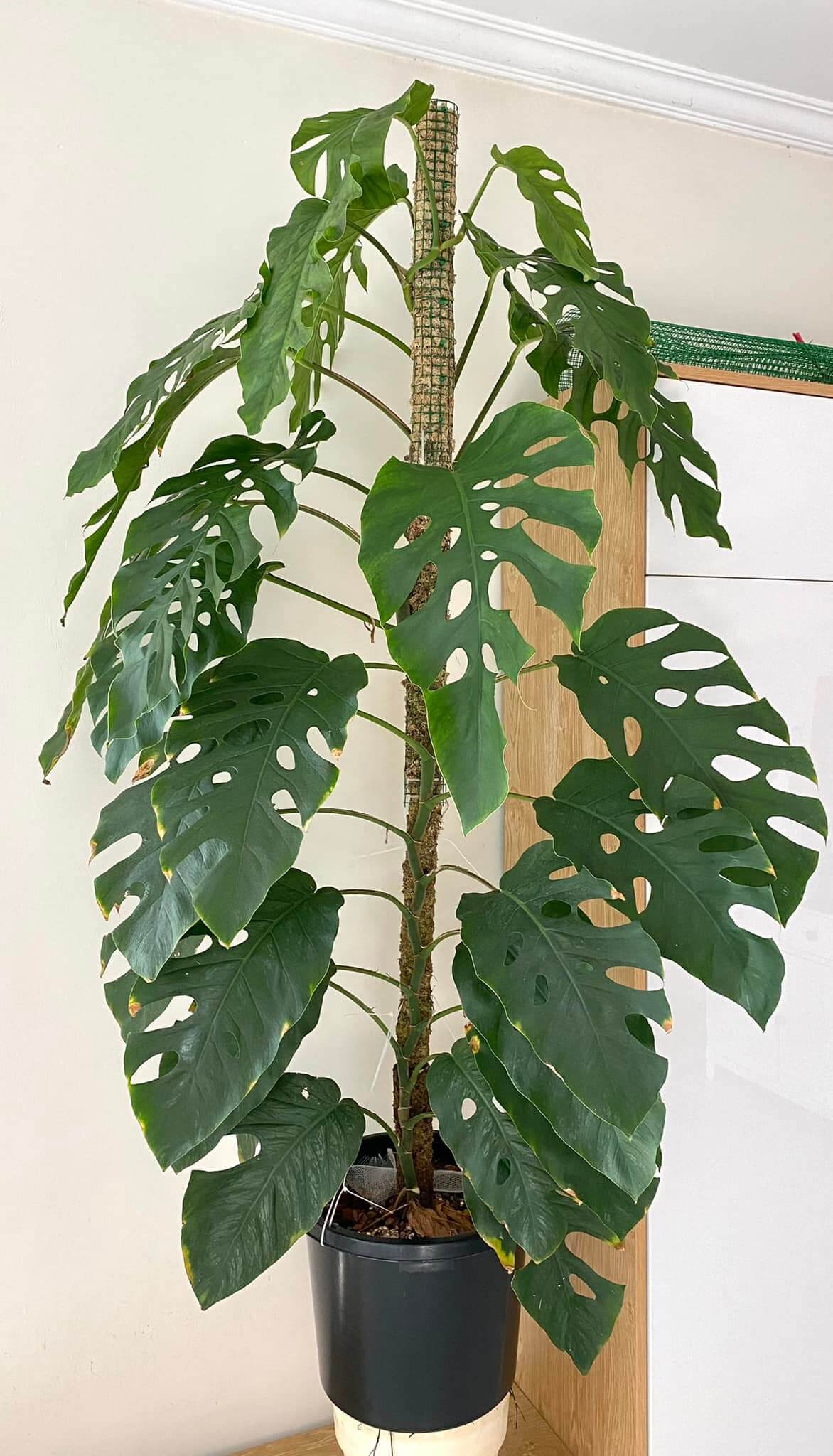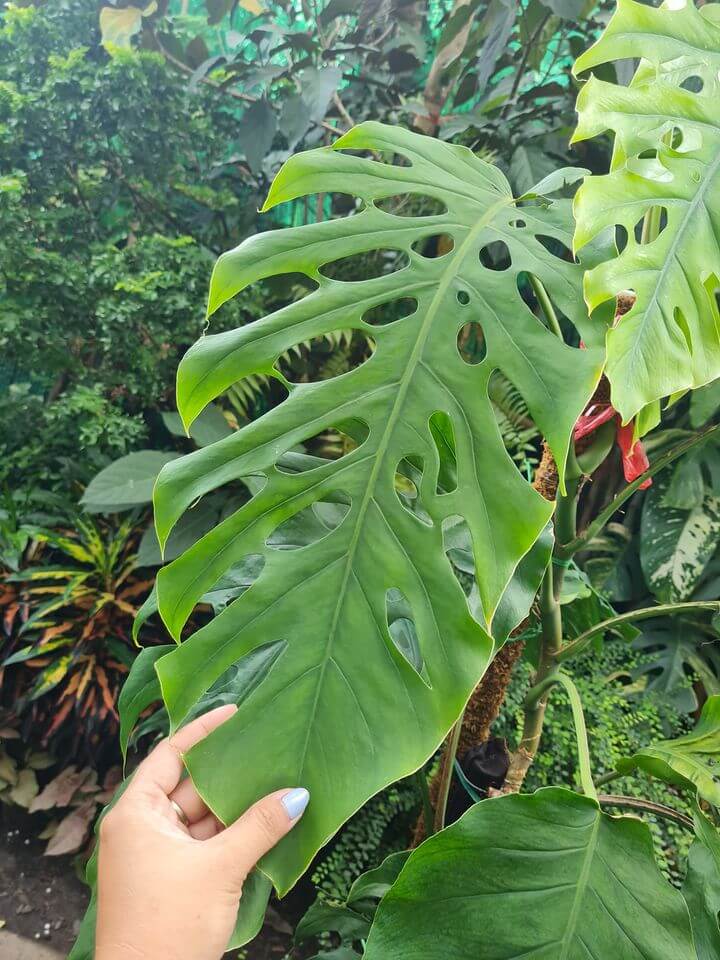Basic Information
Learn how to care for the Monstera Dubia, a stunning plant with variegated leaves and shingling growth, adding a tropical flair to any indoor space.



Light
Monstera Dubia requires ample amounts of bright but indirect light, preferably 8 to 10 hours a day. This replicates the plant’s natural habitat, and direct sun can scorch its leaves. Therefore, it is important to find a spot with filtered light. If the light is too low, the growth of the plant may slow, and the leaves may lose their variegation.
Tip: When dealing with artificial lights, it’s important to move your plant away from the light source to avoid excessive exposure to light.
Water
Water your Monstera Dubia every 7-10 days to keep it healthy. However, it’s essential to be flexible with the schedule based on temperature and evaporation changes. You can check if the soil is dry by poking your finger 2 inches down or lifting the plant. For more precise measurements, consider using a soil moisture meter. Remember that the plant can handle dry soil for a few days. During the cold winter months, reduce the frequency of watering. Cold soil retains water longer than a plant in a warmer environment, so it’s essential to be mindful of this.
Soil
A well-draining mix is crucial. Combine orchid bark, peat moss, and perlite for optimal growth. This mix retains moisture while preventing waterlogging, supporting healthy root development.Maintaining a neutral pH level between 5 and 7 is crucial to ensure the soil is not too acidic for this plant species.
Temperature
Monstera Dubia prefers a warm climate, thriving in temperatures between 65-80°F (18-27°C). Avoid temperatures below 60°F (15°C) to prevent stress and damage to the plant.
Humidity
To help your Monstera Dubia thrive, it needs to be in an environment with at least 60% humidity, and the higher the humidity, the better. You can increase the moisture levels in your plant’s environment by using a humidifier that allows you to set the humidity level precisely or by placing your Monstera near other humidity-loving plants. Another effective method is to put your plant on a pebble tray filled with water and pebbles. These methods are particularly helpful during the dry winter season.
Fertilizer
To keep your Monstera Dubia plant healthy, fertilize it three times a year during the growing season with a liquid fertilizer. However, be careful not to over-fertilize, as it may lead to salt buildup and harm the plant. Use a slow-release houseplant fertilizer to ensure your plant gets the necessary nutrients. You can opt for fertilizer sticks and insert them about 2 inches (5 cm) apart from each other into the soil. This will provide adequate nutrients while avoiding the risk of over-fertilization.
Growth Rate
The Monstera Dubia grows moderately, and its leaves become larger and more intricate as it matures. It can grow up to 3-10 ft (0.9-3 m) tall but only 1-2 ft (30-60 cm) annually. If grown outdoors, support it with a moss pole, bamboo stake, trellis, totem, or wall/fence.
Pet Safety
Dubia plants are toxic to pets if ingested, so keep them out of reach of curious cats and dogs.
Grow in Semi-Hydro
- Monsteras, known for their robust growth and iconic split leaves, flourish in semi-hydroponics systems like LECA/Pon, thanks to their adaptive root systems and love for moisture.
- Transitioning Monstera to semi-hydroponics is effective with a Nutrient Stagnant Wicking (NSW) setup, ensuring a stable and efficient growth environment.
- In LECA/Pon, Monstera roots quickly adjust, overcoming any initial challenges with root adaptation in the NSW system.
- A nutrient mix with a concentration of about 800-1000ppm is ideal for fertilizing Monsteras in semi-hydro setups.
- Monsteras are adaptable to various temperature and humidity conditions, making them suitable for growth in diverse indoor environments.
- Ongoing care includes regular monitoring of the water level in the reservoir and periodic flushing of the system to promote healthy and continuous growth.
Tips
- Rotate the plant regularly for even growth.
- Support its climbing habit with a moss pole or trellis.
- Prune any yellow or damaged leaves to maintain health.
- Check for pests like spider mites, mealybugs, and scale insects.
- Provide a stable environment without frequent changes in location or conditions.
- Repot every two to three years to encourage growth and refresh the soil.
Caring for Monstera Dubia is a rewarding experience, bringing a piece of the tropics into your home. With proper care, this stunning plant will grow and flourish, becoming a focal point in your indoor garden.
Happy planting! 🌱


